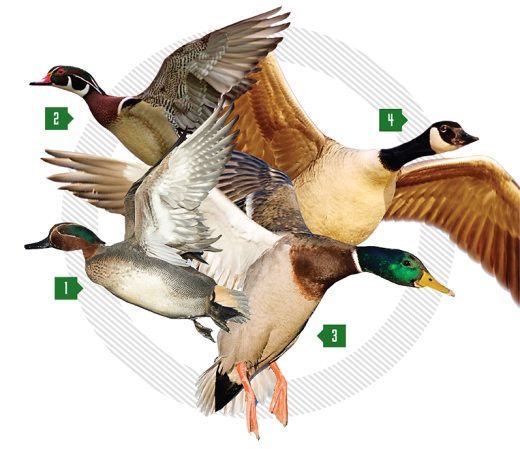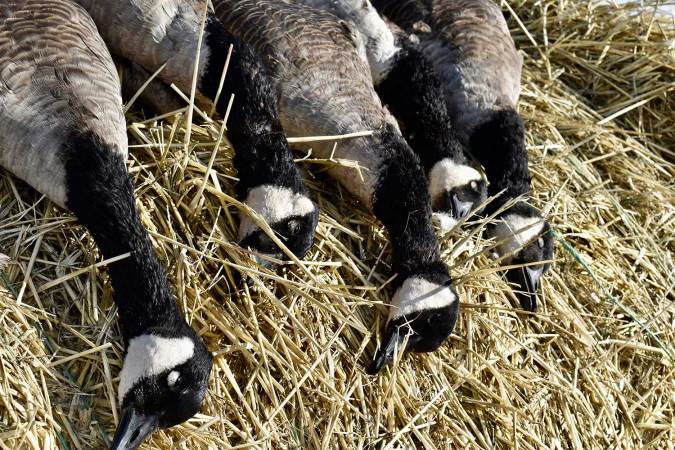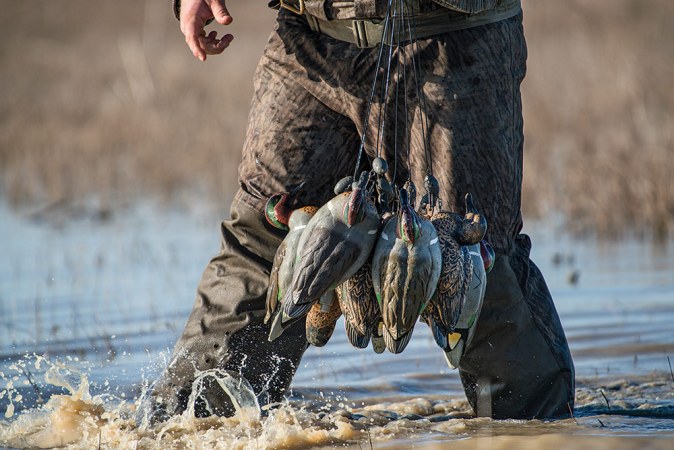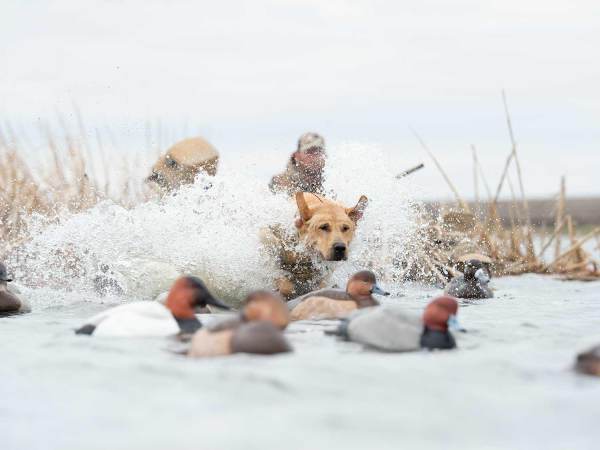Sure, you’ll pop a bufflehead from your puddle duck spread on occasion. But dedicated diver hunting means swarms of bluebills, redheads, canvasbacks, and goldeneyes decoying just off the gun barrel. It takes place on big water and is at its best when the weather is cold and dangerous. But a hot shoot can make mallard snobs trade Texas rigs for longlines. Here’s your crash course.
1. SCOUT MINI FLYWAYS
Scouting is the most critical part of any waterfowl hunt. You’re glassing for numbers of divers, of course, but there are other details to consider. Don’t mistake a feeding area—which is a great place to hunt—with a loafing area, where you may not fire a shot. Divers “raft up” on open water while resting. Loafing rafts of birds can look promising, but if you flush them, they’ll usually just go loaf somewhere else.
Instead, search for bars, points, and inlets where you can see actively diving (feeding) birds. Study the flight patterns of incoming and outgoing birds, and look for places to hide. If you notice ducks banking around a particular point with good cover, your bluebill senses ought to tingle.
2. GO DEEP
While you might catch a canvasback picking around the shallows with teal and shovelers, most divers feed in 3 to 10 feet of water on mollusks, small fish, and aquatic vegetation. Remember that as you’re narrowing down a hunting spot. Setting a decoy spread in water that’s too shallow is a surefire way to save on ammunition. I try to place my shallowest decoys in hip-deep water, minimum.
3. MATCH THE HATCH
Divers—particularly sea ducks such as goldeneyes and buffleheads—can be amazingly species-selective. Time and again, I’ve watched goldeneyes land with four goldeneye decoys on the perimeter of a six-dozen bluebill spread. I’ve also seen bluebills and buffleheads actively avoid goldeneye decoys. When you’re scouting, take note of the species composition in the area. If you’re running a mixed spread of decoys (I almost always do) and are having trouble finishing certain species, try segregating the decoys a little more.
4. CROSS SET
Divers commit to decoys low and fast. A crosswind setup will often provide the most shooting opportunity because it coaxes birds to fly the length of the spread rather than target one spot. Set a single long line of decoys on the downwind edge of the main spread, on the shoreline side. The farthest decoys on that line should extend to the edge of shotgun range. The head of the spread is amassed slightly upwind of the hide but within easy gun range. Your primary species decoys should be front and center. An open-water pocket with a pair of floating spinners (see “Bluebill Float,” ) on the upwind edge should be right in front of the hide. In a perfect world, ducks will follow that long line to the head of the spread and finish over the spinners.
Read Next: How to Call Diving Ducks
5. DOWNSIZE
Divers are tough, and fast follow-up shots are part of the game. Conventional wisdom says big pellets for tougher birds, but I actually prefer No. 4 steel and a tight choke when I’m decoying divers. I only take close shots, so I’m not worried about pellet penetration. I want as many pellets as possible to hit the bird, preferably in the head and neck.
























